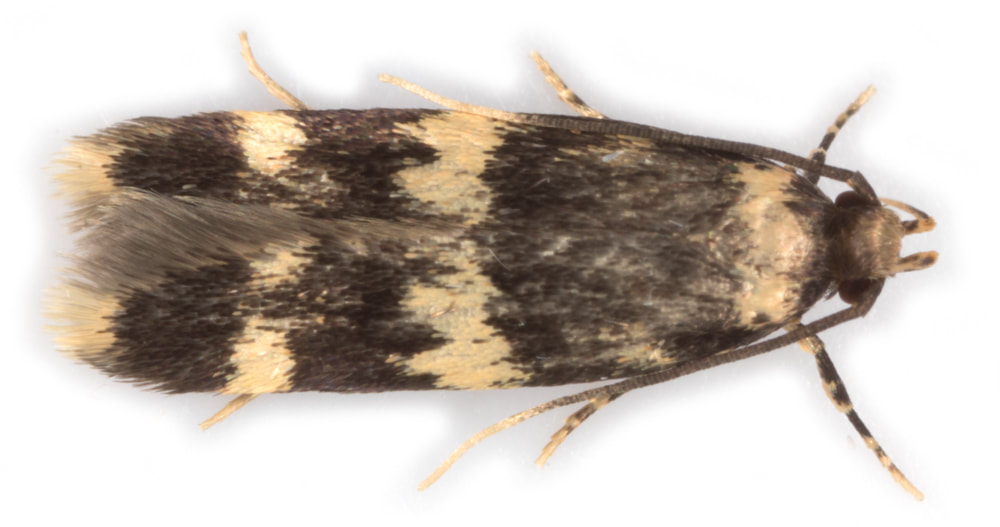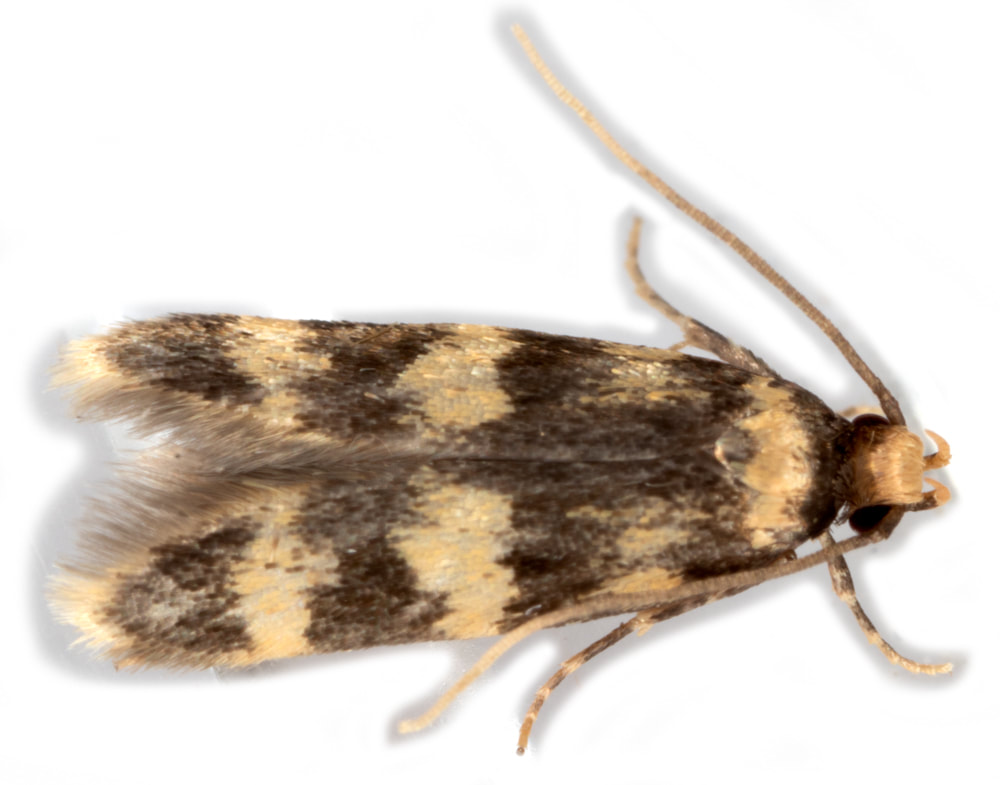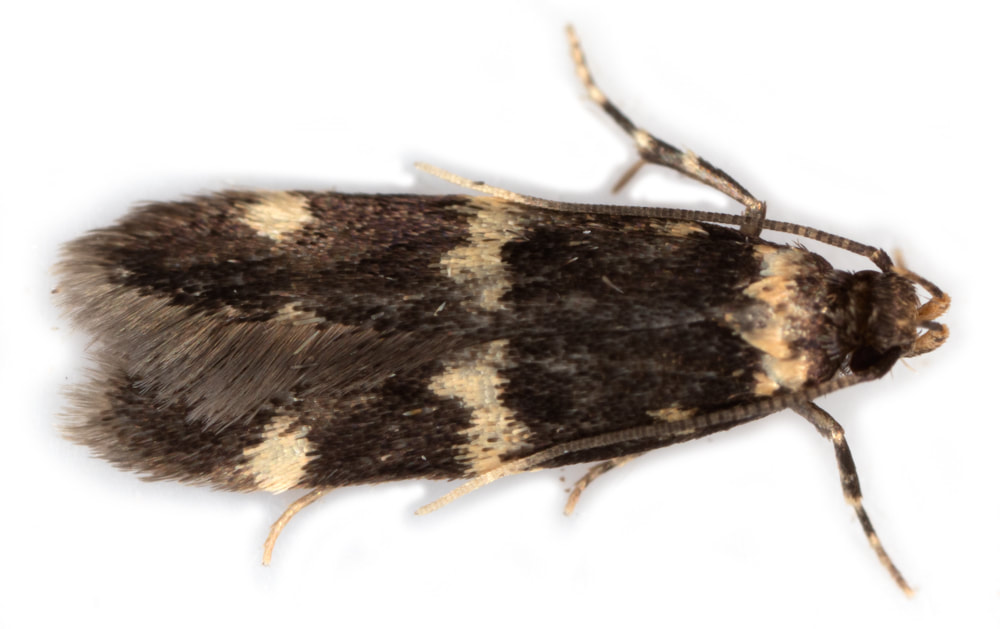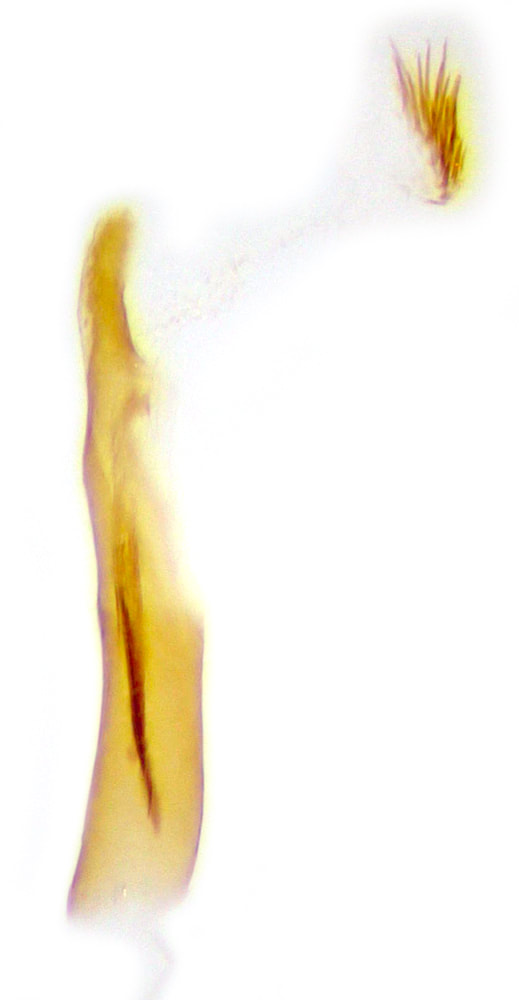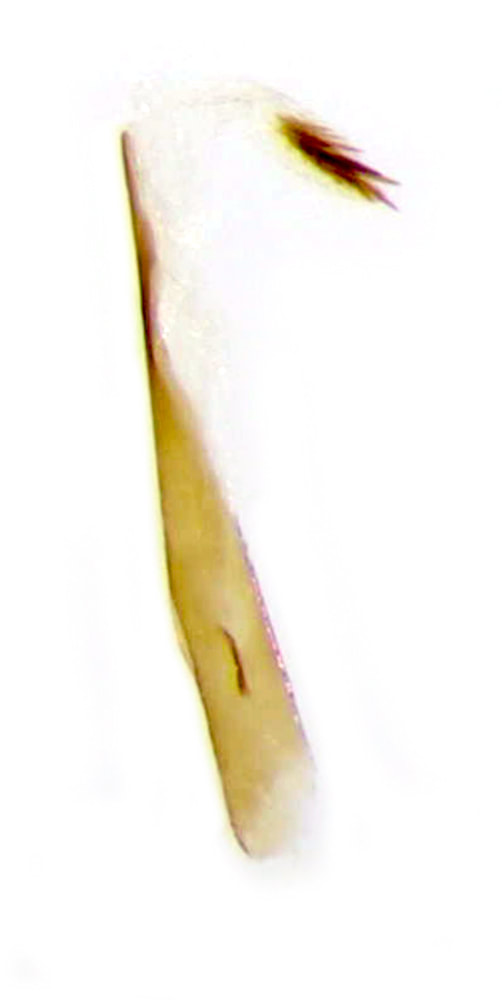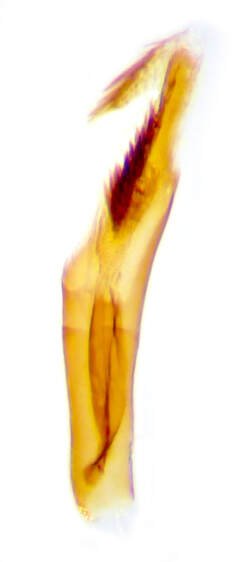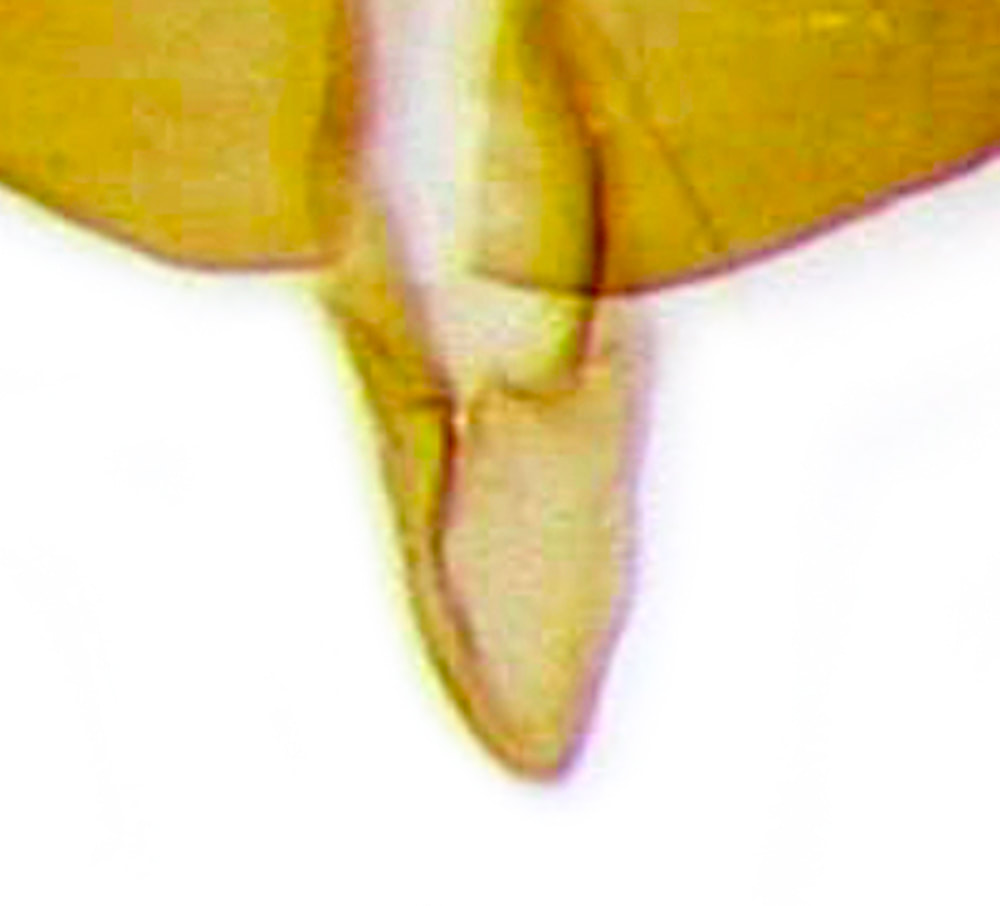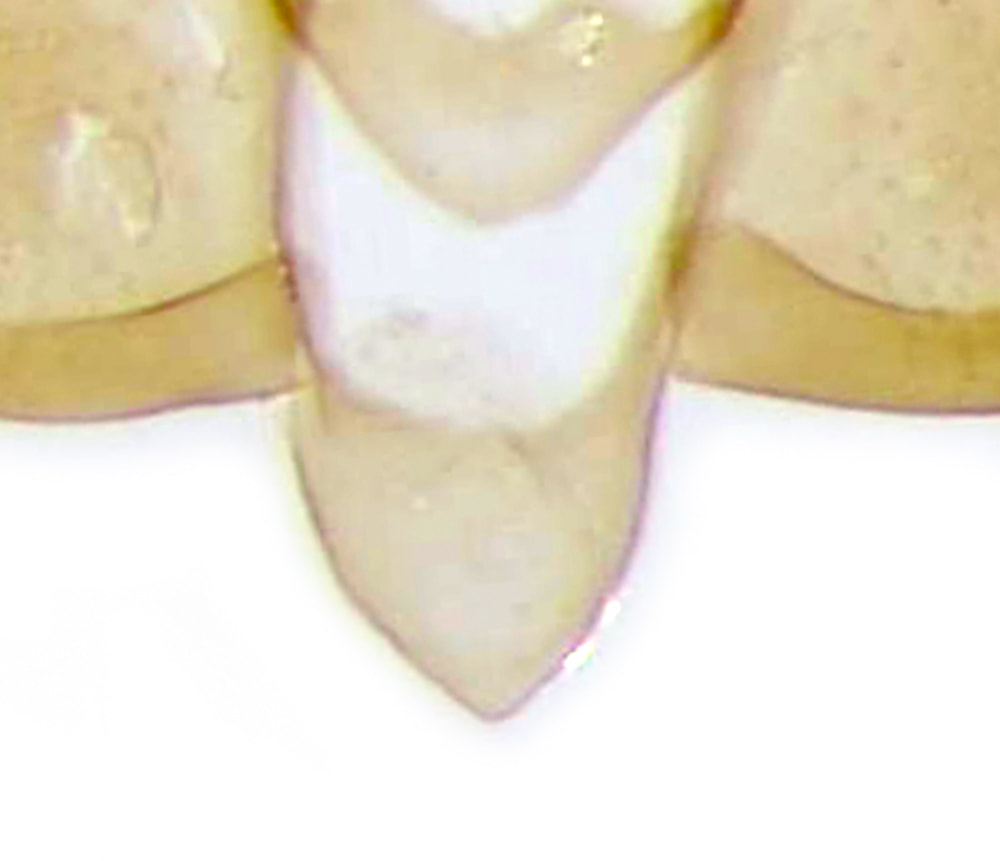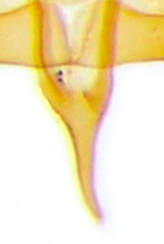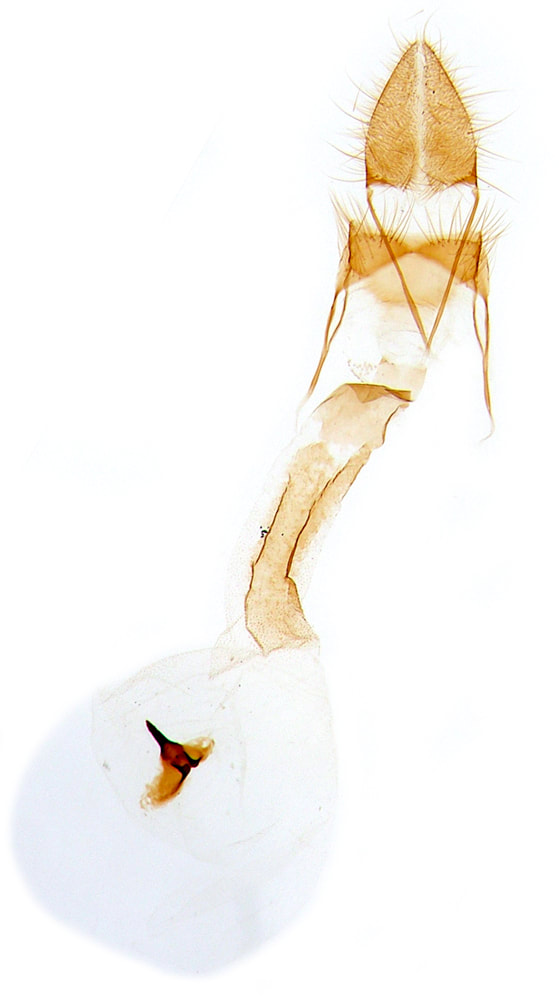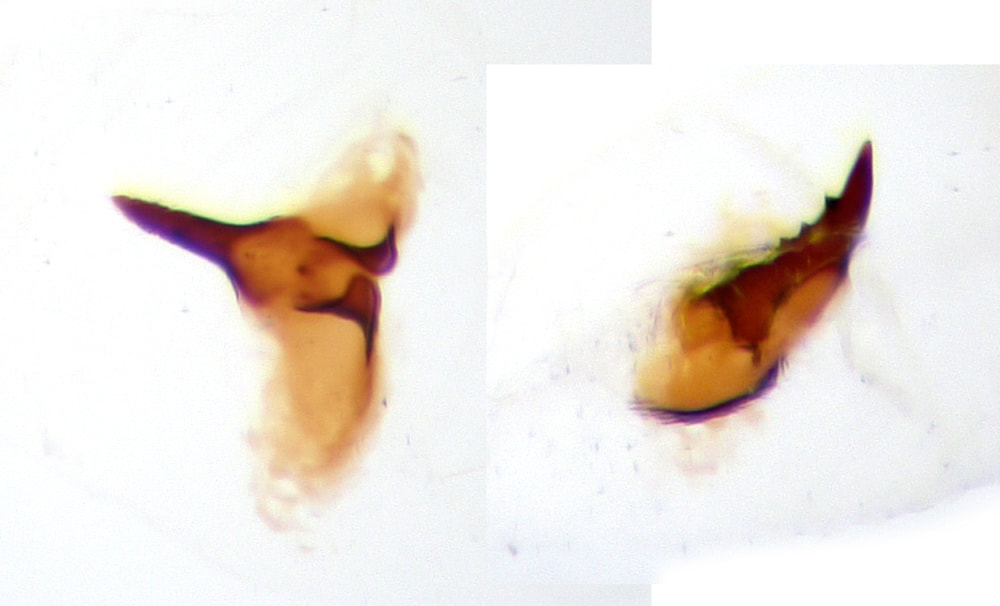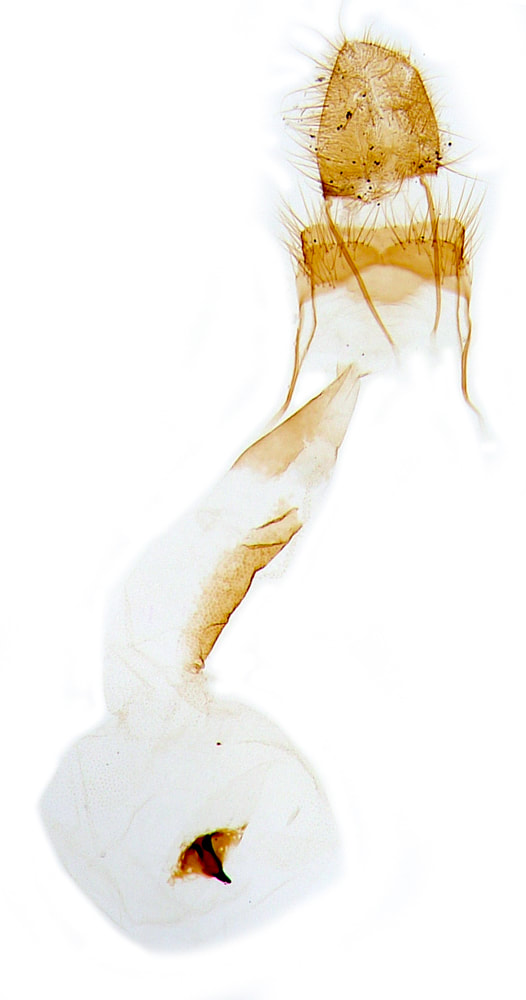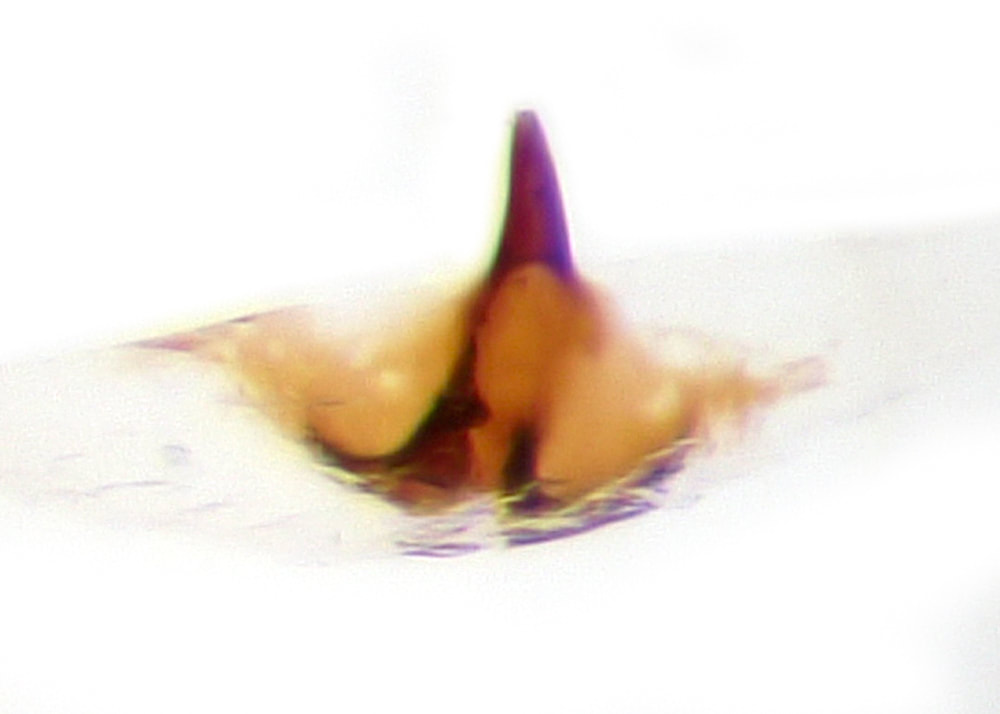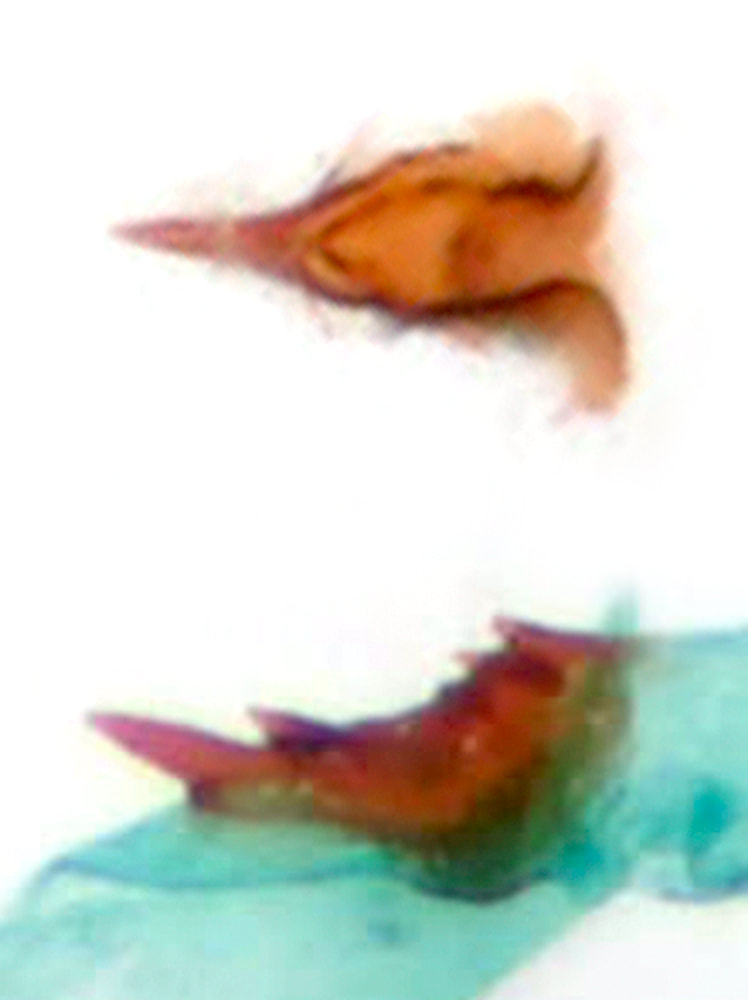Suborder:Glossata Infraorder:Heteroneura Superfamily:Gelechioidea
All British species are in Subfamily: Symmocinae
Tribe: Oegoconiini - Genus: Oegoconia (3S)
Tribe: Symmocini - Genus: Symmoca (1DB)
Head smooth scaled;Antenna without pecten; Maxillary palps folded, scaled, 4-segmented
Labial palps erect, S2 thickened with scales ventrally, S3 long and pointed
Hindtarsus with long scale-tuft on dorsal surface; Forewing V7&8 forked, V1c absent; Hindwing subtriangular; V6&7 stalked, V3&4 connate
All British species are in Subfamily: Symmocinae
Tribe: Oegoconiini - Genus: Oegoconia (3S)
Tribe: Symmocini - Genus: Symmoca (1DB)
Head smooth scaled;Antenna without pecten; Maxillary palps folded, scaled, 4-segmented
Labial palps erect, S2 thickened with scales ventrally, S3 long and pointed
Hindtarsus with long scale-tuft on dorsal surface; Forewing V7&8 forked, V1c absent; Hindwing subtriangular; V6&7 stalked, V3&4 connate
Oegoconia (3S)
ID of Oegoconia species
All are black with a similar and similarly variable arrangement of white spots. Descriptions in MBGBI4.1 indicate that specimens with ws 11-13mm should be O.deauratella, but I have taken a specimen of O.quadripuncta with fw 5.5mm so do not believe this to be a reliable distinction. Sterling & Parsons give the following features as potentially helpful: O.deauratella is dark and has the narrowest pale median fascia; O.caradjai is paler with a narrower forewing and a broad median fascia and a partial subbasal fascia which is "rarely present in O.quadripuncta"
Male genitalia: Separation in key in MBGBI4.1 in male based on shape of saccus and strength of a sclerotised bar in the aedeagus; the drawings (p189) also illustrate differences in shape of the sacculus. Photographs and a description of the male genitalia is also presented in Stirling & Parsons (p389) and all 3 species are shown at Moth Dissection. The aedeagus of all 3 species has a group of spines attached to the vesica projecting from the apex. Diagnostic differences are tabulated below.
All are black with a similar and similarly variable arrangement of white spots. Descriptions in MBGBI4.1 indicate that specimens with ws 11-13mm should be O.deauratella, but I have taken a specimen of O.quadripuncta with fw 5.5mm so do not believe this to be a reliable distinction. Sterling & Parsons give the following features as potentially helpful: O.deauratella is dark and has the narrowest pale median fascia; O.caradjai is paler with a narrower forewing and a broad median fascia and a partial subbasal fascia which is "rarely present in O.quadripuncta"
Male genitalia: Separation in key in MBGBI4.1 in male based on shape of saccus and strength of a sclerotised bar in the aedeagus; the drawings (p189) also illustrate differences in shape of the sacculus. Photographs and a description of the male genitalia is also presented in Stirling & Parsons (p389) and all 3 species are shown at Moth Dissection. The aedeagus of all 3 species has a group of spines attached to the vesica projecting from the apex. Diagnostic differences are tabulated below.
Male Genitalia |
Aedeagus |
Saccus |
O.quadripuncta |
Long basal bar, no subapical spines |
Equilateral triangle |
O.caradjai |
Short basal bar, no subapical spines |
Shield-shaped with a small apical nipple |
O.deauratella |
Long basal bar, patch of subapical spines |
Narrow triangle with sides much longer than base |
Female genitalia: Separation in the key in MBGBI4.1 is based on shape and sclerotisation of ductus bursae and shape of signum; but Sterling & Parsons comment: " there is variation within and between the females of these species and reliable separation on genitalia cannot always be achieved". The ductus bursae is kinked near the ostium in O.quadripuncta and O.deauratella but not in O.caradjai and is also relatively weakly sclerotised in O.caradjai. The signum is somewhat variable, but is composed of a base plate with a strong projecting spine; in O.deauratella the spine is distinctly dentate on its concave margin, more finely dentate or smooth in O.quadripuncta and O.caradjai.
Uncertainties: Images at Moth Dissection and the drawings in MBGBI4.1 show the base plate of the signum of O.quadripuncta to be narrower and more folded than is seen in the specimen shown here. The image shown here of O.deauratella has a distinctly dentate signum but this one female was trapped along with 4 proven male O.quadripuncta.
Uncertainties: Images at Moth Dissection and the drawings in MBGBI4.1 show the base plate of the signum of O.quadripuncta to be narrower and more folded than is seen in the specimen shown here. The image shown here of O.deauratella has a distinctly dentate signum but this one female was trapped along with 4 proven male O.quadripuncta.
|
O.quadripuncta
Ductus bursae kinked near ostium and well-sclerotised; signum fairly smooth |
O.caradjai
Ductus bursae not kinked and relatively weakly sclerotised |
O.deauratella
Ductus bursae kinked near ostium and well-sclerotised; signum distinctly dentate |
Symmoca
004 Symmoca signatella (Dockland Obscure)
As far as I am aware this is an accidental import, not established in GB - Doubtfully British
004 Symmoca signatella (Dockland Obscure)
As far as I am aware this is an accidental import, not established in GB - Doubtfully British
Page published 2012 | Female ID section added 09/08/2023
